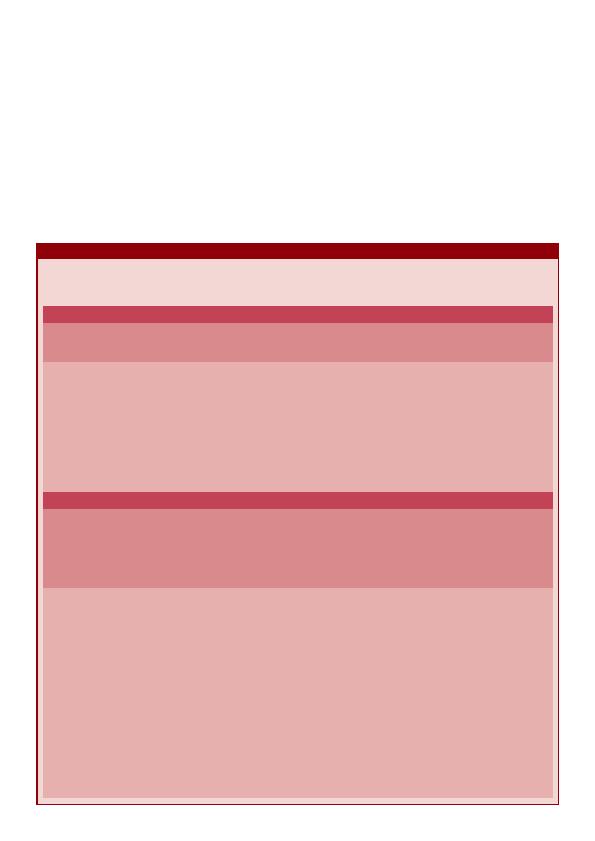
356
l
Neurone
·
Vol 16
·
N°9
·
2011
vite dans leur travers prosaïque d'évalua-
tion des images. Lorsque les radiologues
ont adopté une certaine méthode de tra-
vail, il semble difficile de les en éloigner.
Le rapport structuré exige en effet un pro-
fond remaniement de la méthode de tra-
vail. Par ailleurs, il n'existe pratiquement
aucun programme approprié à l'établisse-
ment de ce rapport structuré. Jan Bosmans
conseille aux développeurs informatiques
de ne pas attendre que la demande vienne
des radiologues proprement dits, mais
qu'ils prennent les devants et qu'ils
conçoivent les programmes appropriés
pour les radiologues intéressés. Enfin, Jan
Bosmans pense que les radiologues fe-
raient mieux de ne pas attendre que l'obli-
gation du rapport structuré vienne directe-
ment des autorités sans avoir réellement eu
voix au chapitre, dès que les décideurs
politiques seront convaincus des avan-
tages dudit rapport. Une contribution
constructive aux nouvelles initiatives, avec
une participation massive des radiologues
proprement dits, peut finalement mener à
une situation bénéfique pour tous.
Références
1.
Bosmans JML, Weyler JJ, De Schepper AM, Parizel PM.
The radiology report as seen by radiologists and referring
clinicians. Results of the COVER and ROVER surveys.
Radiology 2011;259:184-95.
2.
Bosmans JML, Van Goethem JWM, De Schepper AM.
Structure and content of the radiological report: an audit
of 94 reports from a university education center. JBT-BTR
2004;87:260-4.
3.
Bosmans JML, Weyler JJ, Parizel PM. Structure and
content of radiology reports, a quantitative and qualita-
tive study in eight medical centers. Eur J Radiol
2009;72:354-8.
4.
Bosmans JML, Peremans L, De Schepper AM, Duyck
PO, Parizel PM. How do referring clinicians want radio-
logists to report? Suggestions from the COVER survey.
Insights into Imaging 2011. Online first. DOI: 10.1007/
s13244-011-0118-z.
The first and second pairs of reports for scenario 2: a patient undergoing routine follow-up of an abdominal
aortic aneurysm with important incidental finding revealed on sonography.
Limited content
Prose report
There is a 4.6cm abdominal aortic aneurysm, unchanged. There is a new 2cm solid mass in
the right kidney. The left kidney is normal. The liver, gallbladder, intrahepatic ducts, common
bile duct, spleen, pancreas, and inferior vena cava are normal.
Itemized report
Liver
Normal
Gallbladder
Normal
Intrahepatic ducts
Normal
Common bile duct
Normal
Pancreas
Normal
Spleen
Normal
Right kidney
New 2cm solid mass
Left kidney
Normal
Inferior vena cava
Normal
Aorta
4.6cm abdominal aortic aneurysm; unchanged
Moderate content
Prose report
The patient has a history of abdominal aortic aneurysm. This was a satisfactory scan. Comparison
is made to February 7, 1997. There is a 4.6cm abdominal aortic aneurysm, unchanged. There is
a new 2cm solid mass in the right kidney. The left kidney is normal. The liver, gallbladder,
intrahepatic ducts, common bile duct, spleen, pancreas, and inferior vena cava are normal.
Opinion: the aneurysm is not significantly changed. The new renal mass is suspicious for a
renal cell carcinoma.
Itemized report
Clinical indication
Abdominal aortic aneurysm
Scan quality
Satisfactory
Compared with
February 7, 1997
Liver
Normal
Gallbladder
Normal
Intrahepatic ducts
Normal
Common bile duct
Normal
Pancreas
Normal
Spleen
Normal
Right kidney
New 2cm solid mass
Left kidney
Normal
Inferior vena cava
Normal
Aorta
4.6cm abdominal aortic aneurysm, unchanged
Opinion
Abdominal aortic aneurysm, not significantly
changed; new renal mass, suspicious for renal
cell carcinoma
Tableau 1: Exemple de rapport structuré, version courte et version un peu plus longue.
